Here we are in 1944, still in the midst of World War II, and Hollywood animation is in peak form.
This is as good as it ever gets, folks, with studios like Warner Bros. and MGM churning out masterpiece after masterpiece, and even lesser studios like Walter Lantz and Famous Studios releasing some high-quality work.
Among new characters brought to the screen this year – Columbia attempted to adapt Al Capp’s wonderful Li’l Abner strip to the screen, but the series (featuring titles like Amoozin’ But Confoozin’ and Kickapoo Juice) failed to capture the satirical wit of the comic strip. Over at Walter Lantz, the ever-irritable Wally Walrus was introduced as a foil for Woody Woodpecker in The Beach Nut. Famous Studios gave us Herman Mouse in The Henpecked Rooster, although he wouldn’t be paired with his frequent co-star Katnip until Mice Meeting You in 1949. Tex Avery unleashed Screwy Squirrel at MGM, perhaps the zaniest cartoon character ever created. And Chuck Jones introduced the Three Bears, the most dysfunctional cartoon family of all time, in the Warner Bros. cartoon Bugs Bunny and the Three Bears.
On this list, you’ll find a heavy amount of Warner Bros. shorts, including two Bugs Bunnys, one Daffy Duck, one Porky Pig and one war-related one-shot from Bob Clampett. But there’s also a handful of shorts from MGM, a couple from Walter Lantz and one from Disney.
Take a look:
THE BARBER OF SEVILLE
Directed by James Culhane; Walter Lantz
Characters like Bugs Bunny and Daffy Duck started out as deranged lunatics, but eventually grew into more interesting, individualistic characters. The fact that Woody Woodpecker never developed beyond his initial screwiness during his 1940s heyday is a part of his charm. It was clear that Woody was a star ever since he stole the show in 1940’s Knock Knock, but the studio lacked the writing and directorial talent to capitalize on his anarchic potential, wasting the woodpecker in sub-standard shorts like The Hollywood Matador (1942) and The Dizzy Acrobat (1943). With the arrival of James “Shamus” Culhane, a veteran of Disney, Fleischer and Iwerks (not to mention a brief stint at Warner Bros.), Woody finally had a director that could milk his insanity for all it was worth.&
The Barber of Seville was his first crack at a woodpecker short, and it remains Woody’s most celebrated appearance. In the film, Woody goes ballistic in a barbershop, singing the “Largo el Factotum” from Gioacchino Rossini’s Barber of Seville while wildly attacking an Indian Chief and a construction worker. Culhane has a better grasp of Woody’s personality than previous directors, and the character even looks better. Woody’s appearance was modified a bit in his previous film Ration Board (1943), but animator Emery Hawkins and layout artist Art Heinemann really perfected Woody’s design here, giving him a more appealing look while maintaining his abrasive nature (future redesigns of Woody would only serve to soften the character, downplaying what made him so intriguing).
Despite the strong artwork, however, weak writing was always a problem at Lantz, and The Barber of Seville has its share of it. Storyman Ben “Bugs” Hardaway was capable of good work, but he never met a corny gag he didn’t like, and the short’s opening half features several groan-inducing puns and topical references. Culhane and Hardaway clashed over the writing of the films, with Culhane later recalling, “to him a gag was a gag. The fact that it was out of character, or did not advance the plot, he dismissed with impatience as too scientific and technical for an animated cartoon”. This sort of writing plagued the bulk of the Lantz films, dragging down intriguingly directed cartoons like Chew Chew Baby (1945) and Who’s Cookin’ Who (1946).
The Barber of Seville is the best of the Woodpeckers because any story weaknesses are thoroughly trounced by its incredible speed and energy. Like Frank Tashlin, Culhane was well-versed in film techniques (he was studying the writings of pioneering Russian filmmakers V. I. Pudovkin and Sergei Eisenstein at the time he was making these films), and he introduces rapid-fire, highly experimental cutting into his gleefully deranged operatic climax. Linking Woody’s madcap antics to the rhythm of the score actually helps the audience read some of the quicker shots and actions that might’ve gotten lost without the careful match-up of music and animation, and layout man Art Heinemann ingeniously sets the action against sparse color gradients to signal that we’ve transported from a generic cartoon barbershop into a realm of pure cartoon insanity.
The short really is a visual powerhouse, and Woody’s actions – unhinged as they are – have an elegant grace to them (look at Woody’s strong appeal in the scene where he squirts shaving cream into a cup). There’s also some highly expressive distortion in scenes like the one where Woody spots the construction worker trying to sneak out the door (“coming mother”): Woody snaps into a wonderful take where his neck elongates, his eyes bulge and his hair spikes out, and then he lunges towards the construction worker so haphazardly that his bottom half is out of the shot before his top half has even started moving. Even crazier is the bit where Woody starts shouting out “FIGARO” and briefly transforms into multiple woodpeckers, standing on each other’s heads in an elaborate pattern. Strange as it sounds on paper, it makes perfect sense within the fevered atmosphere of this short. Best of all, Woody’s cross-eyed glee at the mayhem he creates strikes a winning balance of high comedy and pure terror; certainly the scene where he slowly pulls out his razor is enough to send chills down your spine. At a time when animators were pushing the boundaries of manic freneticism in their cartoons, The Barber of Seville stands out among the best of the bunch.
THE GREATEST MAN IN SIAM
Directed by James Culhane; Walter Lantz
In this beautiful and electrifying cartoon, the men of Siam try to prove that they deserve the hand of the king’s sexy daughter. This short was an entry in the Swing Symphonies series, which typically produced one-shot cartoons with engaging music but uninteresting stories / lackluster animation (examples: The Hams That Couldn’t Be Cured, Cow Cow Boogie, etc.) As with the Woody Woodpecker cartoons, however, the series was jolted to life when James Culhane arrived at the studio. This film is one of his best efforts, and one of the finest shorts to emerge from the Lantz Studio.
The Greatest Man in Siam, along with its excellent sequel Abou Ben Boogie (1944), isn’t really funny or interesting story-wise so much as it is an explosion of exciting visuals and peppy music. Due to the weaknesses of the writing at the Lantz Studio, Culhane seems most at ease in films where the plot and dialogue are close to irrelevant, and that’s certainly the case here. The energy is so high and the visuals are so strong that they give the film its shape and flavor.
There is some top-notch animation of jitterbugging castle-dwellers, and the Fastest Man in Siam – intriguingly outlined in white instead of black – is such an amazingly drawn and animated character that it’s no wonder his design was used for the starring role in Abou Ben Boogie. He is also featured in the film’s most ingenious gag, where he shoots an arrow, only to run to the other side of the castle, plant a tree, pluck an apple from the tree, put it on his head and turn it into applesauce. As for the girl (referred to as Miss X on model sheets), she isn’t as expressive as Preston Blair’s Red character at MGM, but I’m not complaining: her dancing is brilliantly animated (particularly that shimmy that she does) and the closeup painting of her face is beautiful. There are also some incredible shots set against a blank void in which the Hottest Man in Siam swirls around on an electric buzz, and one amazing moment that features only the man’s outline as he plays his trumpet, which is a real testament to the filmmaker’s incredible imagination.
In fact, the cartoon makes its strongest impact in its color styling and backgrounds. Layout man Art Heinemann and background artist Philip DeGuard (scoring their first onscreen credits) create some of the most daring and stylized cartoon landscapes this side of John McGrew and Eugene Fleury’s groundbreaking work on Chuck Jones’ Warner Bros. output (little wonder that DeGuard would become Jones’ primary background artist in the 1950s). There are some bizarre color combinations going on here, and it is to Heinemann’s great credit that it all pulls together so well, creating a truly evocative foreign atmosphere (whether it in any way resembles Siam is a separate question). Culhane later bragged of Heinemann’s inventive layouts for this short, and the way he used paper cutouts instead of paint to design the film’s many flat areas of color with no gradations of value, correctly likening the effect to a Matisse painting. I don’t think I’ve ever seen large patches of black used so daringly or effectively in any cartoon. And as if that weren’t enough, Culhane and Heinemann managed to slip some pretty Freudian imagery past the censors: note that many of the castle’s doorways are shaped like phalluses. A dirty joke, sure, but it also nicely ties in to the film’s theme of lust. High marks for everybody here.
HOW TO PLAY FOOTBALL
Directed by Jack Kinney; Walt Disney
Throughout the 1930s, Walt Disney was intimately involved in overseeing the animated shorts he produced, examining each frame to make sure they were all as good as they could possibly be. But as his attention shifted to other things, most notably animated features, his control over the Disney shorts waned. This lack of involvement from Walt had its drawbacks; each Disney short in the ‘30s was treated as an event and an opportunity for experimentation, but by the mid-‘40s, many popular series were running on autopilot. The plus side, however, was that some directors took the newfound freedom to plunge into the kind of Looney Tunes-inspired anarchy that Disney would’ve nixed some years earlier. And no one took advantage of this freedom more than Jack Kinney.
Kinney helmed the How-To Goofy shorts of the ‘40s, and in his hands, the series spiraled into madness. Early entries like Goofy’s Glider (1941) and The Art of Skiing (1941) show a knack for zany physical humor, but they stick generally with Goofy’s established persona as an endearing klutz. The Art of Self-Defense (1941) starts to get weirder, as we are shown Goofys throughout time (including Goofy Cavemen, Goofy Sphinxes and even a Goofy Father Time), finally settling into a battle between Goofy and his own shadow. In How to Play Baseball (1942), Kinney presents us with an entire baseball team of Goofys, although still with one foot stuck in Goofy’s traditional characterization, not to mention a bit of the lush style of animation we associate with Disney. Kinney’s timing continued to get sharper and his gag ideas stranger in films like How to be a Sailor (1944) and How to Play Golf (1944), until we finally reach a pinnacle of Goofiness in How to Play Football. In the short, Taxidermy Tech plays against Anthropology in a madcap ball game full of star players named after Disney crew members, such as director Clyde Geronimi, layout artist Don DaGradi and animator John Sibley.
In Football, any pretense of Goofy as a character is abandoned, as we are presented with an entire stadium of Goofys, all with different names, roles, voices and personalities. In many scenes, the characters are missing the standard-issue long droopy ears, changing the Goofys from anthropomorphized dogs into bizarrely snouted humans. It’s a very strange thing to do – transforming a beloved cartoon star into a multitude of anonymous beings in order to create comic spectacle – and as far as I can tell it’s pretty unprecedented (wild as the Warner Bros. cartoons could often be, they rarely diverged from their characters’ standard personalities). That such a cartoon should emerge at Disney, the studio where personality animation was born, thus allowing for individualized characters like Goofy to exist, is particularly ironic.
In some ways this feels like a sarcastic, meta-comment on cartoon series in general: it’s a Goofy cartoon because it says it’s a Goofy cartoon, even if no one in the film is named Goofy or acts anything like him. After all, when everyone is Goofy, then no one is Goofy (as I believe Socrates put it). And yet, the fact that this is a Goofy cartoon isn’t irrelevant to the film, as our awareness of his oafish persona is crucial to the humor. Goofy’s face here serves not to reflect a specific character, but instead functions as all-purpose cartoon clown makeup. Slapping Goofy’s snoot on a bunch of people running around trying to achieve something is an implied mockery of the action before the gags even start. In Kinney’s mad universe, we’re all Goofy.
This satirical starting point gives the Disney artists leeway to create the ultimate cartoon statement on football. The short is jam-packed with wonderfully silly visual gags, but what really gives the cartoon its flavor is its fast-paced, anything-for-a-laugh attitude. Every aspect of football is given the razz here; you’ve got gags about the experience of watching the game (the narrator is drowned out by roaring fans and a great play is blocked by hulking spectators), the game’s inherent violence (one of the Goofs is carried away on a stretcher while the narrator insists that football is a character-building sport) and over-the-top team spirit (in one gut-busting scene, three Goofy cheerleaders chant the ungainly title “Taxidermy” while beating the crud out of the middle Goofy). The masculinity of the game is also burlesqued in the coach’s effeminate fawning over his star player.
And speaking of the coach, he initiates my favorite sequence in the film – the halftime pep talk – which never ceases to make me laugh no matter how many times I watch it. His absurdly unsubtle methods of psychology strike me as the perfect summation of a lot of sports talk, and the animation is wonderful in its extremeness. The film’s final laugh is directed towards the worshipful attention fans award their teams’ coaches: the narrator describes how the coach’s clear-headed reasoning wins the game while the coach gibbers like a lunatic and is escorted off to the mad house. That’s a pretty irreverent spin on a topic that many people take quite seriously, but Kinney doesn’t pull any punches now that he’s armed with not just one Goofy, but an entire army.
LITTLE RED RIDING RABBIT
Directed by Friz Freleng; Warner Bros.
One of the all-time greatest Bugs Bunny cartoons, this Looney Tunes twist on the well-known fairy tale is endlessly quotable and always funny. In the film, bobby-soxer Red Riding Hood takes a rabbit to her grandma’s house, and the Big Bad Wolf becomes more interested in catching Bugs than in eating Red.
Everything about this cartoon is stellar, from the musical selections (Stalling intones “The Lady in Red” during the opening titles) to the excellent animation (one fine example is the wolf tiptoeing behind some trees). Not to mention that this short features some of the best voicework in Looney Tunes history: Mel Blanc, who scored his first ever screen credit on this short, delivers a typically excellent Bugs Bunny. And Billy Bletcher, who had been doing Big Bad Wolf characters all the way back to Disney’s Three Little Pigs in 1933, is absolutely brilliant here; his dismissive grumbling as he shuttles Red out the door is priceless. But the real show-stealer in the short is Bea Benederet as the brash, teenage Red Riding Hood. Her shrill performance of “The Five O’ Clock Whistle” is one of those classic moments in Warner Bros. cartoons that will stick in your mind forever. June Foray deserves all of the acclaim she has received for her wonderful cartoon voices, but Benederet proved herself to be equally talented and even more versatile in the numerous Warner Bros. shorts she appeared in.
Freleng’s comedy timing is as sharp as ever, and the gags concocted by cartoon writer extraordinaire Michael Maltese are wonderful. The film shoots from one great comic set piece to the next, and each one would be the highlight of just about any other film. Choosing a favorite moment is an impossible task… perhaps the out-of-left-field but still somehow perfect performance of “Put On Your Old Grey Bonnet”? The wolf telling the other wolves in the bed to take a powder? The harsh but still hilarious ending, which serves as a clear signal that this is no Disney cartoon (as if there was any doubt before)? Whichever gag strikes your fancy, this is an awfully good cartoon… TA HAVE.
THE OLD GREY HARE
Directed by Bob Clampett; Warner Bros.
It says something about the genius of this cartoon that it is considered to be one of Bugs Bunny’s greatest films, and yet Bugs never actually appears in it in his standard form. He is portrayed as an old man, and later as an infant, but Clampett’s grasp on the character is so strong that he remains fully present onscreen even with all of the twists on his persona.
In the short, the voice of God gives Elmer Fudd a visit to the far-distant year of 2000 A.D., where he shoots Bugs down with a Buck Rogers Lightning-Quick Wabbit Killer. This sends Bugs on one of his patented death scenes, and he reminisces with Elmer about their first meeting as toddlers. The short’s vision of 2000 isn’t exactly prescient (although the mock headline “Smellevision Replaces Television” predates the invention of Smell-O-Vision in the 1950s, a short-lived theater gimmick designed to lure people away from their TV sets). Still, the film is wildly ahead of its time in many respects. This is a six-minute examination of Bugs and Elmer’s relationship, and Clampett treats them like a timeless pair despite the fact that they made their debuts only four years earlier.
The idea of creating alternate young and old versions of established characters feels very modern, more like something you’d expect to see in a tribute to the Looney Tunes cartoons rather than in one of the classic Looney Tunes themselves. Was anyone other than Clampett making such self-reflexive comedy in 1944? It’s hard to imagine even the most daring comedians of the era crafting something similar (is there a Three Stooges short that shows how they first started hitting each other as toddlers? A film that features elderly versions of Laurel and Hardy bumbling through the early 2000s? I don’t think so).
Given the outstanding quality of so many cartoons produced in the Golden Age of Animation – especially at Warner Bros. – it’s easy to forget that these films were considered disposable entertainment at the time, and no one expected that they would be seen by anybody once their theater run was through. In the case of a film like The Old Grey Hare, it’s flat-out hard to believe that Clampett had no idea people would be still be watching his films in the future days he depicts, as he loads the film with funny touches and amusing references that even the most enthusiastic audiences of 1944 couldn’t have fully appreciated.
There are in-house gags (the Smellevision headline is followed by the blurb “Carl Stalling sez it’ll never work”), but even more interestingly, there are seemingly intentional references to older Bugs Bunny cartoons. Young Bugs dresses as a cop and pulls Elmer over for speeding, similar to a trick he pulled in Hare-um Scare-um (1939) – a film from Bugs Bunny’s youth as a character before he “grew up” in A Wild Hare (1940). And speaking of A Wild Hare, Bugs recycles his death scene from that film, fittingly alluding to his first real appearance as he reminisces on his death bed. It’s a bit like the characters in the Seinfeld finale quoting lines from the first episode, only in this case absolutely no one would’ve caught the reference.
It doesn’t matter if you catch it or not, though, as the cartoon doesn’t have to rely on in-jokes to get laughs. The new spins on Bugs and Elmer are screamingly funny (Clampett blends cuteness and zippy slapstick so effectively in the infant sequence that he puts just about every other baby cartoon to shame) and the short never lets up on its inventiveness, even involving the “that’s all folks” card in the comedy. The gags are all wonderful and enthusiastically executed, and Rod Scribner’s crumpled, wrinkly animation of Bugs and Elmer as geezers features some of the funniest drawings in the Warner Bros. canon.
Clampett also shows his usual adeptness in casting his animators; there are some rather morbid, sadistic gags in here (Bugs choking Elmer, Bugs burying Elmer alive), but he hands those gags off to Scribner, whose outrageous style makes them funny. In contrast, he gives the more solid, earthbound Robert McKimson the deathbed scenes, and he imbues them with just the right amount of dramatic weight to sell the humor. Scribner couldn’t have done it better, while that choke gag would’ve died in McKimson’s hands, but one of Clampett’s greatest gifts as a director was getting the best work possible out of his crew. I have a feeling this classic short will stand the test of time over the next 2000 years as well.
PLANE DAFFY
Directed by Frank Tashlin; Warner Bros.
In one of the finest wartime cartoons produced by Warner Bros., a squadron of pigeons avoid the seductions of notorious spy Hatta Mari by sending the army’s #1 woman hater Daffy Duck to deliver a military secret. This sends us into a glorious showdown between the shapely Nazi spy and the deranged duck, who – it must be pointed out – is a pretty poor excuse for a woman hater. The craftsmanship is extremely high in this cartoon all across the board: the artwork is beautiful, the gags are witty, the writing is excellent (there’s some nice rhyming narration in the film’s opening minutes), the pacing is razor sharp and Tashlin absolutely nails Daffy’s hyperactive personality.
Tashlin’s Daffy has some of the same restless energy as Clampett’s, but Tashlin animates him in a wholly different manner. Tashlin’s visual style as an cartoon director was rooted in his experience as a comic strip artist (his comic panel Van Boring, based on his old boss Van Beuren, ran for three years) and rather than highlighting rubbery motion as Clampett might, Tashlin puts the emphasis on sharp poses. In many scenes, he holds one part of Daffy’s body perfectly in place while the rest of him moves around: look at how Daffy’s head hangs in the air while his body melts in to a puddle of lustful goop after Hatta Mari kisses him. Or look at that great gag where Daffy stops zooming through the house to carefully tiptoe up the steps; the stiffness of his pose is key to the humor. Tashlin’s flat, angular gestures predate the stylized movements seen in the UPA cartoons of the 1950s, but the comic approach is uniquely Tashlin.
There’s an edge to the humor here that serves as a nice reminder that the Warner Bros. cartoons were not aimed at children when they were first released; sex is the primary source of comedy in this film, and there are also numerous gags related to drinking and suicide. This fits well with the sensibilities of Frank Tashlin, who was perhaps the raciest of the Warner directors and frequently slipped dirty jokes past the censors. It didn’t always work, mind you: The Stupid Cupid, a masterful Daffy Duck cartoon from 1944 that I couldn’t fit on this list (I’m sorry! I could only do one!), reportedly had an end joke where Daffy pops in between a rooster and his wife embracing, remarking, “if you haven’t tried it, don’t knock it!” The Hays Code didn’t find the gag amusing and cut it, ending the short on an abrupt note. Given this sort of meddling, it’s perhaps no surprise that Tashlin-directed Private Snafu cartoons like The Home Front (1943) and Censored (1944), created for the U.S. army without any interference from the Production Code, are practically overflowing with pinup girls and partial nudity.
Tashlin’s penchant for baiting the censors continued into his live-action films, which are filled to the brim with lewd visual gags and sexual innuendos, particularly his two Jayne Mansfield vehicles, The Girl Can’t Help It (1956) and Will Success Spoil Rock Hunter? (1957). In fact, some have remarked that the slinky Hatta Mari served as something of an animated precursor to Mansfield, who was always somewhat like a real life cartoon. Still, even the most rubber-faced leading men in Tashlin’s films (Jerry Lewis, Tony Randall, Danny Kaye) could never quite capture the zany electricity of Daffy Duck.
RUSSIAN RHAPSODY
Directed by Bob Clampett; Warner Bros.
Of all of the anti-Hitler cartoons produced during World War II, one of the most gleefully merciless is Russian Rhapsody, where a bunch of little gremlins wreak havoc on Der Fuehrer as he attempts to fly to Moscow. Gremlins were a popular myth among servicemen as a source of blame for accidents and malfunctions, but Bob Clampett was the first to bring gremlins to the screen in 1943’s classic Falling Hare, starring Bugs Bunny. Walt Disney was planning to adapt a story about gremlins by Roald Dahl into a feature film, and he contacted Warner Bros. to request they not mention gremlins in the titles of their films. As a result, Bugs Bunny and the Gremlin was changed to Falling Hare, and Gremlins from the Kremlin was changed to Russian Rhapsody. As it happens, the Disney feature never materialized, so the cartoon titles were changed for nothing.
Given the Red Scare that took place in the late ‘40s and early ‘50s, it’s easy to forget that Stalin was briefly considered something of a hero in the United States because he presented a threat to Hitler. This cartoon taps into that pro-Russian mentality, even setting a song about the gremlins (with lyrics written by Clampett himself) to the tune of classic Russian tunes like Ochi Chyornye and Eh, uchnem. These colorful Bolsheviks are designed with impish imagination, and Rod Scribner’s stretchy, highly distorted animation makes their takedown of Hitler a joy to watch. The gremlins have some of the same anarchic delight in destruction as the little creatures in the 1984 film Gremlins, and given director Joe Dante’s preoccupation with the Warner Bros. cartoons, I wouldn’t be surprised if this film was one of his primary inspirations.
Even aside from the gremlins, though, one of the cartoon’s most sharply satirical moments is Hitler’s opening speech, wonderfully animated by Robert McKimson, which spins a few shots from Leni Riefenstahl’s notorious propaganda film Triumph of the Will into comedy gold. In the scene, Hitler madly sputters gibberish (tossing in references to sauerkraut and Warner director Friz Freleng) while screaming his lungs out. This is wartime comedy at its most irreverent. The short also has a touch of the sophomoric humor that Clampett was known for; Hitler is transformed into a jack-ass (with the phrase “jack-ass” written across his body in case you missed it), a termite loudly burps after eating off the airplane’s wings (note to current animation directors: having a character shout the word “BURP” is much funnier than a generic burping sound) and one gremlin’s nose extends out from between another character’s legs, making for a pretty clear erection metaphor.
Also interesting is that the cartoon is basically one big in-joke. Hitler name-drops Friz Freleng and Henry Binder in his speech, and also mentions What’s Cookin’, Doc, a cartoon Clampett directed the same year as this one. The Gremlins from the Kremlin song also tosses in a reference to Disney’s Der Fuehrer’s Face, released the previous year. Most notably, however, the bulk of the gremlins seen in the film are caricatures of Warner Bros. staff members. Among the many, many artists featured in the film are writer Ted Pierce (the gremlin with the long nose), production manager Johnny Burton (the little yellow gremlin with the saw), writer Melvin “Tubby” Millar (with the nail on his head), assistant producer Henry Binder (with the V-shaped hair), writer Michael Sasanoff (with the blue hair), animator Arthur Davis (the little green gremlin with the electric socket), etc. We also get to see producer Leon Schlesinger hitting his right-hand man / brother-in-law Ray Katz with a tiny hammer, an overweight Chuck Jones hammering at a tiny green Friz Freleng… and even a caricature of a naked pink Bob Clampett using a pick-axe! Great stuff.
SCREWBALL SQUIRREL
Directed by Tex Avery; MGM
Although Tex Avery was largely responsible for the creation of Bugs Bunny and Daffy Duck at Warner Bros., and had a hand in the development of Porky Pig and Elmer Fudd, when he moved to MGM he stopped bothering much with character and became primarily concerned with making the funniest cartoons imaginable. Crazy, impossible comedy delivered with incredible speed to gain maximum laughs was Avery’s sole mission, and inventing likable characters that could conceivably head a series become almost antithetical with his style.
His most obvious attempt to create a recurring character along the lines of Bugs Bunny or Woody Woodpecker was Screwy Squirrel, a zany character with a voice patterned after the juvenile delinquent Wilbur on the Tommy Riggs and Betty Lou radio program. It’s difficult to say if Avery was pressured into crafting a cartoon star for MGM, but his heart didn’t seem to be in it, and it’s difficult to imagine audiences embracing Screwy the same way they did Bugs Bunny or Tom & Jerry. Screwy was designed to be abrasively obnoxious, heckling anyone who passed by with little to no provocation and constantly calling his own existence into question. Screwy Squirrel was retired after only five cartoons, with Avery mercilessly killing him at the end of his final short, Lonesome Lenny (1946).
And yet, the aspects of Screwy Squirrel that make him impossible to imagine as a beloved cartoon star are paradoxically the aspects that make him so appealing. Screwy Squirrel is purely a cartoon, with absolutely no cuteness or relatability about him to stand in the way of his mission of total slapstick anarchy. He is able to bend physics to his will and is constantly breaking the fourth wall, reminding us insistently that he is an animated character. In many ways he is the ultimate 1940s cartoon star, or perhaps a parody of one, or perhaps the anti-cartoon star, or perhaps all of those things rolled into one fourth-dimensional squirrel. Even Woody Woodpecker would have to bow to the screwball mastery of this guy.
Screwball Squirrel marked his maiden voyage, and it is a masterful assemblage of zany jokes (the film has no real plot, in case you were wondering, it’s just a series of chase gags involving a dimwitted dog named Meathead). Screwy pulls Meathead’s face off using fly paper, yanks his nose and twangs it like a guitar string and plants a wacky kiss on his lips repeatedly. There are also numerous postmodern references to the medium of animation itself: Screwy and Meathead are locked in place until Screwy realizes the film’s score is skipping, Screwy provides his own sound effects in a scene where Meathead rolls down a hill in a barrel, Screwy halts the iris-out so he can heckle Meathead some more and when he can’t think of the next gag, Screwy lifts up the frame to glimpse at the following shot. The bizarre ending reveal that Screwy Squirrel had a twin brother feels like an early draft of the equally impossible ending of Avery’s masterpiece Northwest Hounded Police, featuring Avery’s one MGM character who genuinely became a star, Droopy Dog.
Still, the greatest aspect of the film is the opening sequence, which parodies Disney-style cuteness with ferocious intensity. As with Red Hot Riding Hood, Avery uses the incredible skill of his animators to great advantage, creating a convincingly lush and serene landscape for a Disney short before having Screwy show up to wreck it. Was there ever a more clear demonstration of Avery’s philosophy as an animation director than this film? Right off the bat, Avery distances himself from the “illusion of life” style of the Disney shorts, and this opening perhaps should’ve clued Avery in to the fact that his contempt towards such ideas would prevent him from ever creating his own Mickey Mouse while at MGM. Then again, perhaps he didn’t really have any interest: in Sammy Squirrel’s rundown of his adorable forest friends, one of the names he rattles off is Barney Bear, a surprisingly straightforward dismissal of one of MGM’s own starring characters. If Screwy had to be Disneyfied to become a star, then better to kill him off first. Good on Avery for sticking to his guns, although I wish he had gotten to make more Screwy Squirrels anyway.
THE SWOONER CROONER
Directed by Frank Tashlin; Warner Bros.
The Academy Award-nominated The Swooner Crooner (Tashlin’s only film – animated or otherwise – to be nominated for an Oscar) has long been a favorite of people who grew up watching the Looney Tunes on television, which is interesting given the topical nature of much of the humor. In the short, Porky Pig is the manager of “Flockheed”, an Eggcraft Factory where chickens lay eggs on an assembly line (cue Raymond Scott’s “Powerhouse”). However, the chickens all begin to swoon over a Frank Sinatra-esque rooster, causing them to lay even more eggs. Seeing this, Porky hires a rooster who resembles Bing Crosby to compete with Frankie and increase egg production even further.
Reference is made to the fact that Porky is producing eggs for the war effort, and in some ways this film might be seen as a cartoon spin on women’s roles in the workforce during WWII (Frank Tashlin’s excellent Porky Pig short Brother Brat, also released in 1944, focuses on this topic more explicitly). In addition, The Swooner Crooner features mild satire of industrialization; Porky manages his farm in a mechanized factory where he simply pulls cranks and pushes buttons, never dealing directly with the animals. Tashlin may not have known how right on the money he was, as the cartoon doesn’t feel too far removed from the intensive animal farming we have today.
Most notably, the cartoon reflects pop culture of its era by parodying the Frank Sinatra craze – which was just getting started in 1944 – and the supposed rivalry between Sinatra and the big crooner of the previous decade, Bing Crosby. Though the two singers later became friends, appearing together in films like High Society (1956), Sinatra was seen as a threat to Crosby’s success (Crosby was apparently quoted as saying, “a singer like Frank Sinatra comes around once in a lifetime. Why did it have to be in my lifetime?”). This rivalry became a source of humor in several cartoons of the period, such as Arthur Davis’ Catch as Cats Can (1947), in which a Bing Crosby parrot attempts to murder a canary approximation of Frankie!
The centerpiece of the film is a series of lust-fueled gags in which the chickens, screaming in delight over Frankie, lay hundreds of eggs. Tashlin even gives Tex Avery a run for his money with this kind of material, as he finds every visual gag related to egg-laying that could ever be conceived. These gags get increasingly absurd, climaxing in one involving Porky Pig, which serves as the perfect capper to the film. There are also lots of excellent directorial touches here, such as that great shot of chickens passed out on the ground from between Frank’s legs and the unique decision to use cutouts of egg photographs in the final scene. And, needless to say, the animation serves the comedy well, with every silly gag matched beautifully by an equally silly drawing.
Even aside from the wonderful gags and animation, though, the cartoon serves as a delightful crash course in popular music in the 1940s. Animator Dick Bickenbach provides a dead-on vocal impersonation of Bing, and we get to hear great arrangements and performances of “It Can’t Be Wrong” (a song from the 1942 Bette Davis film Now, Voyager, which Frank Sinatra sang a cover of in 1943), “As Time Goes By” (a 1931 song popularized in 1942 by the classic film Casablanca), “When My Dream Boat Comes Home” (a hit song written by Dave Franklin and Cliff Friend, who also wrote the Looney Tunes theme song “The Merry-Go-Round Broke Down”), “I’ll Pray For You” (a wartime hit recorded by the Andrews Sisters), “Trade Winds” (a song Crosby covered in 1940), “Always in My Heart” (an Oscar-nominated song from the 1942 film of the same name) and “You Must’ve Been a Beautiful Baby” (a Crosby standard that was introduced by Dick Powell in the 1938 feature Hard to Get). And then there’s that great audition sequence featuring hilarious rooster parodies of Nelson Eddy (singing “Shortenin’ Bread”), Al Jolson (singing “September in the Rain”), Jimmy Durante (singing “The Lullaby of Broadway”) and Cab Calloway (singing “Blues in the Night”).
Trivia: Frank Tashlin later directed Bing Crosby in the live-action musical Say One For Me (1959). As the story goes, Crosby was complaining about cartoons that made fun of him on set, mentioning this one in particular, and Tashlin proudly informed him that he directed that cartoon.
THE ZOOT CAT
Directed by William Hanna & Joseph Barbera; MGM
Well alreet! This Tom & Jerry classic is the ultimate ‘40s cartoon – full of hep slang, zoot suits and great animation. In the short, Tom is at first dissed by his girlfriend for being too square (the exact wording is, “Boy, are you corny. You act like a square at the fair. A goon from Saskatoon. You come on like a broken arm. You’re a sad apple. A long-hair. A corn-husker. In other words, you don’t send me. So bail out, brother. Get lost. And here’s your rat, cat”). But when he hears about Smilin’ Sam, the Zoot Suit Man, he decides to make his own zoot suit (out of his girlfriend’s hammock, no less) and at last become a ladies man.
I love the film’s contrast between the hep style of the 1940s and Tom’s cornball 1920s-flavored antics (he plays the outdated tune “I’m a Ding Dong Daddy” on his ukelele and spells out “the babe” with a yo-yo). The film’s wonderful sense of period is aided by Scott Bradley’s swinging score and the funny, stylish animation, which represents the best the art form had to offer in the war years. There’s lots of great animation work from Pete Burness and Irv Spence here, and we’re treated to a very funny Tex Avery-inspired wild take from the girl cat, nicely animated by Ken Muse.
The Tom & Jerry cartoons’ erratic use of voices feels like a throwback to the early ‘30s, when characters like Flip the Frog and Oswald the Lucky Rabbit would only occasionally speak and rarely in the same voice. Whereas Chuck Jones stuck rigorously to pantomime in his Road Runner cartoons, Hanna and Barbera never seemed to worry about sticking to much of anything. But for me, the lack of consistency makes it all the funnier when Tom and Jerry do speak, and there’s a surprising amount of dialogue in this film. Jerry asks “what’s cookin’, toots?” in a cutesy-pie voice by Sara Berner, who also provided the excellent voicework for the girl cat in this film. Tom has his usual Bill Hanna screams and yelps, as well as a very funny Charles Boyer-inspired romantic monologue (he uses similar lines in the 1946 short Solid Serenade, giving the impression he has only so many tricks for impressing women up his sleeve). Once Jerry gives him the hotfoot, he caps off the monologue with a remark that sounds a bit like Groucho Marx.
The Academy Award for Best Animated Short in 1944 went to the Tom and Jerry cartoon Mouse Trouble, which is admittedly one of the teams’ greatest appearances. But The Zoot Cat is my personal choice as Tom & Jerry’s finest performance in ’44, and possibly my favorite Tom & Jerry cartoon of any kind (I’ll get back to you on that). The short is infectiously enjoyable, and it reflects its time and place in history as well as any cartoon ever has. Let’s off, Jackson!
Any comments or suggestions for this post? What are your favorite cartoons of 1944? Let me know in the comments below.
![]()
![]()
















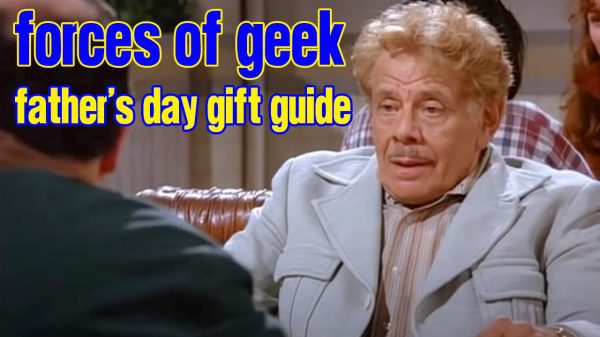


































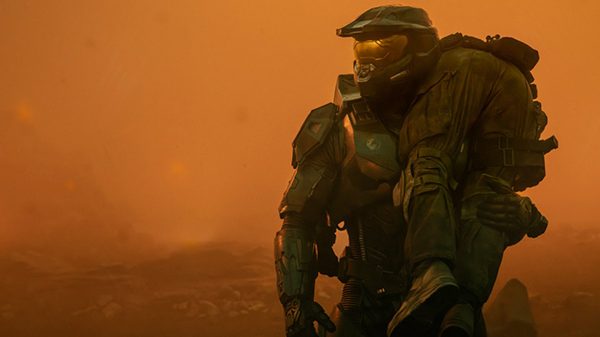










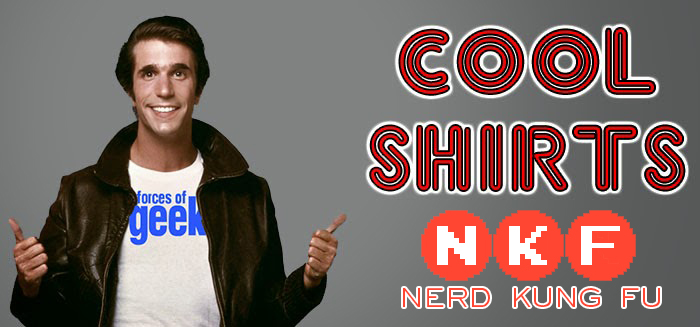





































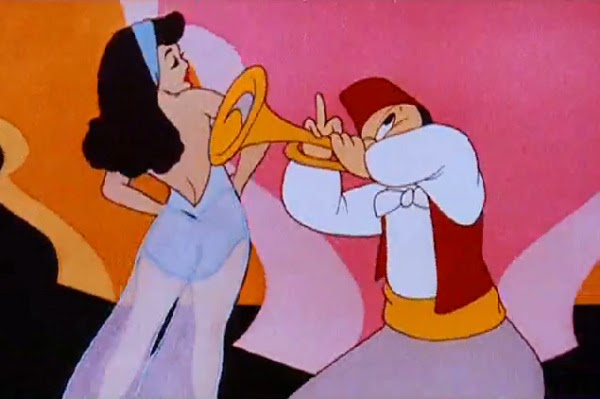

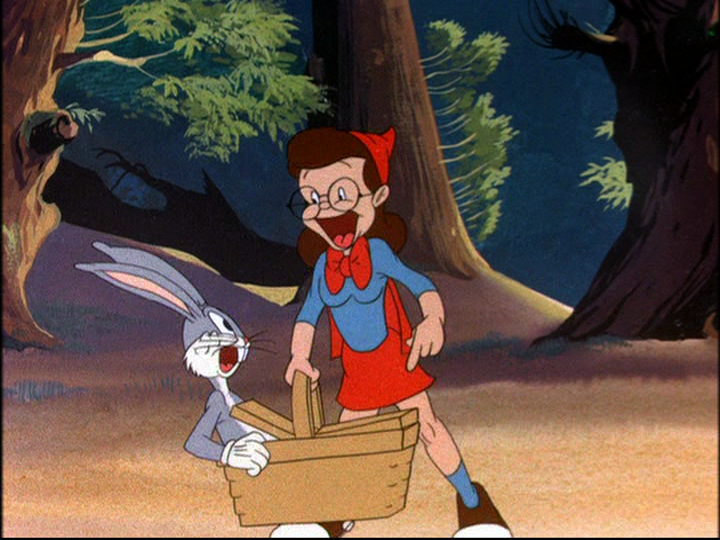





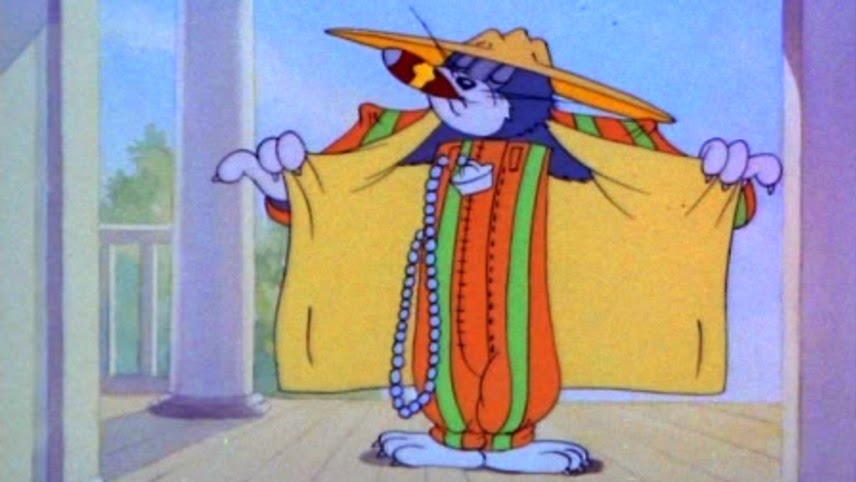








You must be logged in to post a comment Login